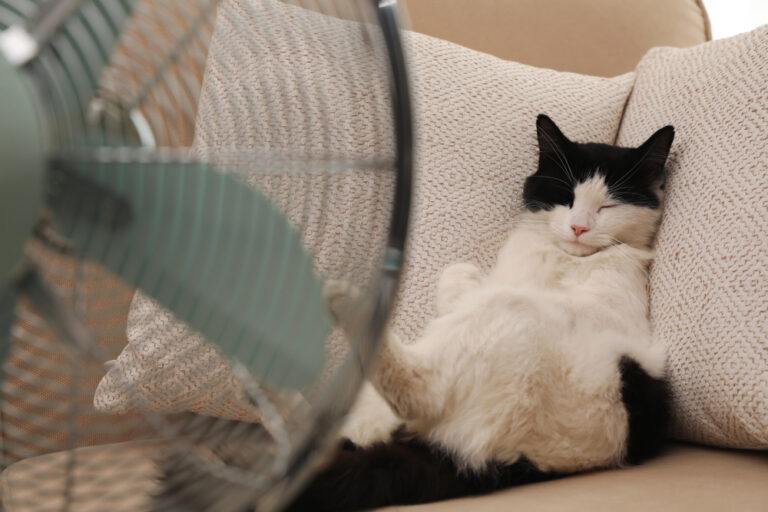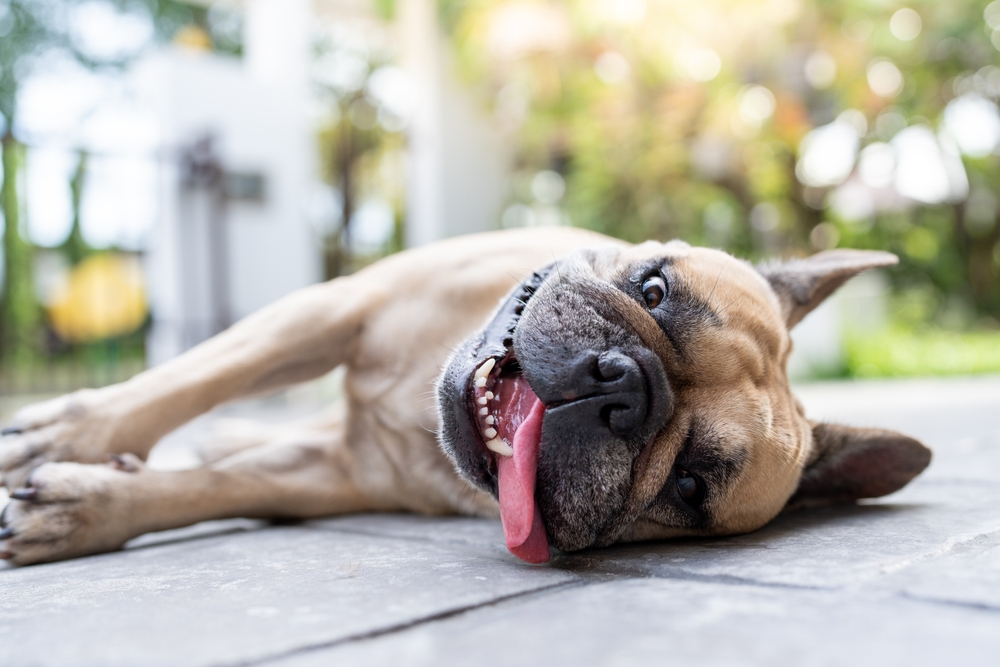
Extreme heat poses serious risks for dogs and cats because they can’t swap their fur for shorts and tank tops to make hot days bearable. Our Urgent Pet Care Omaha team explains how you can help prevent your pet from developing heat-induced illnesses and injuries. Learn about summer heat hazards and keep your four-legged pal cool and calm throughout the season.
Avoid overexerting your dog
When the temperatures are extremely hot or humid, you should not take your dog on a long walk unless they are acclimated to the weather. Remember that your furry friend lacks the sweat glands people have to cool their bodies. A dog has only a few sweat glands, mostly on their paw pads. Adjust the length of your stroll according to the temperature, and, whenever you can, limit walks to early mornings and evenings when temperatures are cooler. Always take along enough water to keep your pet well-hydrated. If you can only take your dog out in the middle of the day, apply a canine-formula sunscreen to their skin to protect them if their coat color is light, especially if they have white ears, which are susceptible to skin cancer. If you have a short-nosed dog, such as a bulldog, boxer, pug, or Pekingese, watch for breathing trouble signs, and take them inside immediately if they are panting heavily.
Humidity affects pets
“High humidity amplifies the negative impact of high temperature on your pet—and in combination, these factors magnify the danger zone,” says Dr. Barbara Hodges, DVM, MBA, of the Humane Society Veterinary Medical Association (HSVMA). High humidity interferes with dogs’ and cats’ natural way of cooling themselves, she explains: “When animals pant, moisture from their lungs evaporates and helps reduce their body heat. But high humidity conditions hamper that process and their ability to cool themselves, and their body temperature can skyrocket—rapidly—to dangerous, or even lethal, levels.” Learn how to take their temperature at home so you’ll be ready if your furry pal exhibits overheating signs. A cat or dog whose temperature is higher than 104 degrees is in danger of heat exhaustion or heatstroke, so call our team for advice.
Never leave your pet unattended in a parked vehicle
Each summer numerous pets are trapped in parked cars and hundreds aren’t rescued in time to save their lives. Ensure you never leave your pet unattended in a parked vehicle. Leaving a dog or cat in a parked car is never OK. Even if the car is in the shade with the windows slightly open, a vehicle’s inside temperature skyrockets quickly. When the outdoor air temperature is 85 degrees or higher, the temperature inside a car with the windows opened slightly can reach 102 degrees within 10 minutes and 120 degrees after 30 minutes. In heat this high, your pet may suffer irreversible organ damage or die. To keep your pet healthy, leave them at home when running errands or bring them in with you to businesses that are pet-friendly.
Protect your pet’s paw pads from scorching surfaces
Pets’ paw pads are sensitive to hot surfaces and can easily blister and burn, so protect them anytime your furry pal is out and about during the summer. Asphalt and concrete pavement, metal bleachers, sand, and dirt can all become scorchingly hot when the air temperature is in the mid-80s or higher. If you place your bare hand or foot on a surface and can’t hold it there comfortably for 10 seconds, the surface is too hot for your dog’s or cat’s paw pads. If you can’t avoid exposing your pet’s paw pads to a hot surface, outfit them with paw protectors.

Heatstroke in pets
Extreme temperatures can cause your pet to develop heatstroke. Keep an eye out for these heatstroke signs:
- Heavy panting
- Glazed eyes
- Rapid heartbeat
- Difficulty breathing
- Excessive thirst
- Lethargy
- Fever
- Dizziness
- Incoordination
- Drooling
- Vomiting
- Seizure or unconsciousness
If your pet shows heatstroke signs, move them inside to an air-conditioned area and offer them cool water to drink. Start the cooling process by pouring lukewarm water over them. Your pet needs prompt veterinary care even if they seem to improve because heatstroke can cause internal damage. Extremely young, old, overweight, or sedentary pets, and those who have heart or respiratory conditions are prone to heatstroke. Dogs and cats with short muzzles are also at increased risk. For more ways to keep your pet comfortable in the heat, contact our Urgent Pet Care Omaha team.

